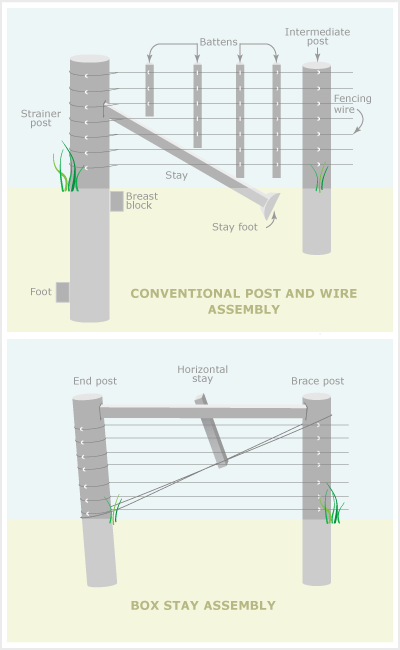
The posts at each end of a fenceline must be supported strongly enough that the wires can be tightened to make them stockproof. This can be done in two ways. In a conventional post and wire assembly (top), a heavy strainer post is buried deep in the soil with a stay foot, breast block and foot to prevent it moving when the wires are tightened. This is the most common strainer post assembly.
The box stay assembly method (bottom) uses two posts to take the strain. The end post is smaller than the large strainer post, and is not buried as deeply. It is supported by a horizontal stay against the next post, kept in place by a twisted wire loop that can be tightened to keep the two posts firmly together.
Te whakamahi i tēnei tūemi
Te Ara - The Encyclopedia of New Zealand
This item has been provided for private study purposes (such as school projects, family and local history research) and any published reproduction (print or electronic) may infringe copyright law. It is the responsibility of the user of any material to obtain clearance from the copyright holder.







Tāpiritia te tākupu hou